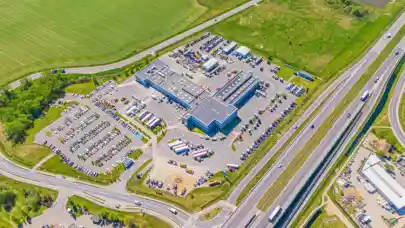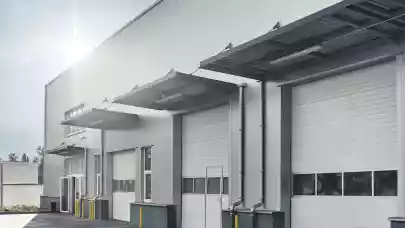
The Polish warehouse real estate market has slowed after a record period of growth that was achieved during the pandemic. Gross demand for warehouse space in Poland for Q1 2023 totalled more than 982,000 sqm, a 35 percent year-on-year drop and an 18 percent decline compared to the five-year average. According to JLL's analysis, however, Q1 2023 was better than the corresponding periods in 2019 and 2020. Most of the new demand was in Poland's major logistics regions.
- The European warehouse real estate market had markedly slowed at the start of 2023. Demand in the first quarter declined by 33% (compared to a strong 2022), with around 5.7 million sqm leased. However, this result was still slightly higher than the corresponding periods of 2019 and 2020. The slowdown was also evident on the developers' side. The total volume of warehouse space under construction in European markets fell by about 18% year-on-year.
- Rents in Europe continue to rise, but declining inflation in the Eurozone is beginning to have a stabilizing effect. Still, Poland continues to see some of the most attractive rates, with values for large suburban units within major markets ranging from €3.5 to €5.5/sqm/month.
- The contraction of European leasing activity is reflected in Poland. At 982,400 sqm, gross demand is down about 35%year-on-year. The softening in demand was even more marked in terms of net take-up with 652,000 sqm, a 43% drop year-on-year.
- Geographically, most of the new demand in Poland was attributable to major markets and Kraków. These locations are mature, relatively stable and reliable in terms of space absorption.
- Lower demand and high construction activity observed in 2022 led to a slight increase in the amount of vacant space in Poland. In the first quarter of this year, it amounted to 1.9 million sqm, about 6.3%of total stock.
Stabilization after a period of significant growth
Both the European and Polish warehouse real estate markets have seen declines in demand and investment activity by developers. Compared to the same quarter of the previous year, net demand in Europe declined by 33%, and by 43% in Poland. However, it is worth noting that the comparisons refer to an exceptionally active period of e-commerce-driven market development, even before the escalation of the conflict in Ukraine.
New warehouses in Poland – a return to the dynamics of 2018 and 2019
In Q1 2023, the new supply of completed warehouse space in Poland was at 1.5 million sqm. This was mainly the result of exceptionally high demand from 2021-2022. However, we can expect a decline in the volume of new supply for the remainder of 2023. "In the first quarter of this year, and for the first time since mid-2021, the volume of warehouse space under construction in Poland fell below three million sq. m., totalling approximately 2.6 million sqm. Still, a significant portion, almost 50%, was space built on a speculative basis. This may illustrate the relatively optimistic approach of developers, who expect a gradual return in tenant activity", concludes Tomasz Mika, Head of Industrial Agency, JLL.
Rental growth easing
In the first quarter of 2023, the upward trend in rental values continued, but only with marginal increases. The average rental value in the Big Five markets increased by 2.2% compared to Q4 2022, ranging between €3.5 and €5.5/sqm per month for suburban logistics parks. The easing of inflationary pressures in the Eurozone is likely to further stabilize rents in the logistics market, both in Poland and Europe.
Challenges to logistics from the commercial sector
One of the factors that has undoubtedly had an impact on the Polish warehouse sector is the situation arising from the retail sector. "As our expertise shows, after a period of serious disruption, Poles are eager to return to brick-and-mortar shops. However, they are increasingly shopping in their neighbourhood, and on their way back from work. This is reflected in the growing popularity of small retail formats, convenience centres and retail parks. The market is also seeing an increase in the dispersion of store chains. This has created the challenge of stocking new, smaller brick-and-mortar stores. Other currently visible trends in the retail market that affect logistics and supply chains include the development of omnichannel strategies and the implementation of click&collect services", says Maciej Kotowski, Director Research & Consulting, JLL.
The pandemic and war dictated terms in previous years
Despite the turbulent economic situation, the Polish industrial market recorded spectacular record results in 2020-2021, confirming its strength and resilience to the external fluctuations of the time. High demand for industrial space and positive expectations fuelled construction activity in Poland between 2020 and 2022. The first quarters of 2020 did see some slowdown due to uncertainty related to the COVID-19 pandemic, but the construction market quickly rebounded, setting a new record of nearly 5 million sqm under construction at the end of Q1 2022. Unfortunately, as the war in Ukraine has caused uncertainty in global markets as well as a spike in construction costs, we are currently seeing tenants, developers and investors revise their existing development strategies.



